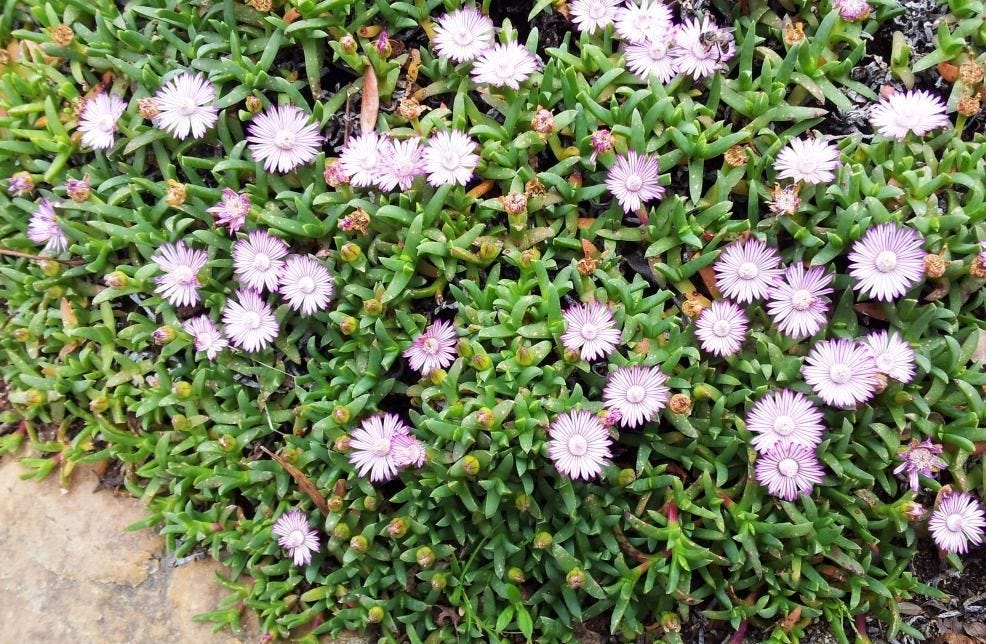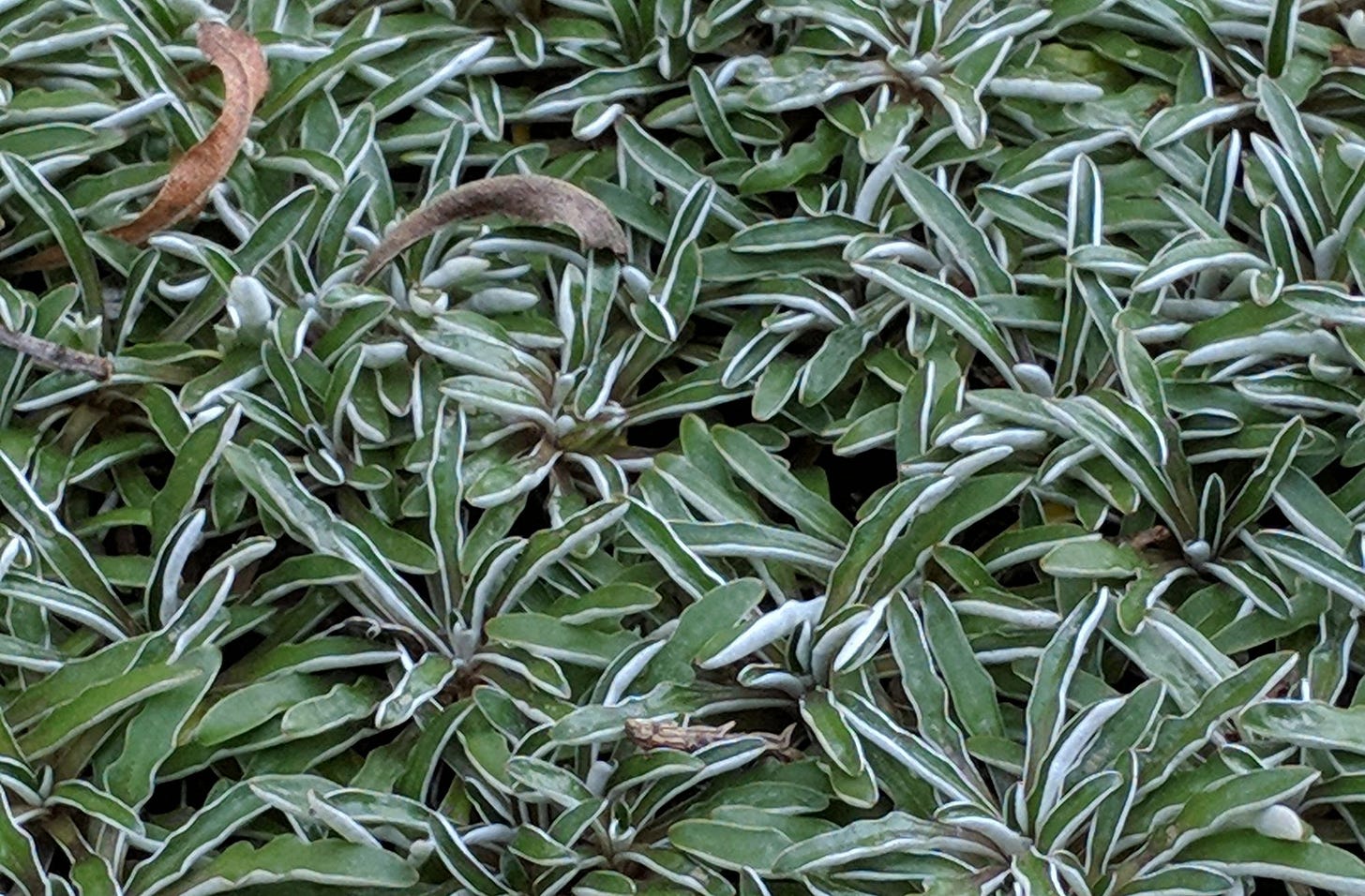Lawn Alternatives
Here are some of the most common plants to use as a more eco-friendly alternative to the old-fashioned grass lawn.

Lawns are a common feature of many landscapes, but they come with their fair share of problems. They require a lot of water, fertilizer and maintenance to stay healthy, and they can contribute to soil and water pollution. If you have a lawn that is not actively used, then you should consider replacing it with a low-maintenance, environmentally friendly alternative to a traditional lawn. Here are some of the most common lawn alternatives that I have worked with, or seen out in the wild.
Yarrow
Yarrow (Achillea millefolium) is a hardy, low-growing plant that is often used as a ground cover. It's drought-tolerant, requires little maintenance, and can grow in a variety of soil types. When allowed to grow flowers, Yarrow also attracts beneficial insects like bees and butterflies, making it a great addition to any garden. While yarrow can be planted from seed, it has a low germination rate it's often easier to start with nursery-grown plants. Once established, yarrow should be mowed every 6 weeks in the warmer months to maintain a tidy appearance. A more detailed guide on Yarrow for lawns is available here.
Kurapia
Kurapia is a low-growing ground cover that is becoming increasingly popular in drought-prone areas. Kurapia is a commercially created sterile cultivar of Lippia nodiflora, a plant native to California, and it has been shown to use up to 60% less water than traditional turf grass. Kurapia is also resistant to pests and diseases, and it can be mowed to maintain a uniform height, or left unmowed it will stay below 4". I have found that it will maintain a fuller appearance when mowed, but it only requires a monthly trim. Mowing is also desirable to prevent flowers from growing as these can be very attractive to bees. This plant is suitable for a variety of soil types and climates, and it's a great choice for areas where water conservation is a priority. Unlike most other lawn alternatives, this is available in sod rolls and can be planted like turf grass.
When designing gardens where a lawn alternative is desired, Kurapia has always been my go-to as it strikes the right balance between low maintenance, attractiveness, and hardiness to foot traffic. It can be quite a bit more expensive than other materials but that may change as it increases in popularity and becomes more widely available.
Dymondia
Dymondia (Dymondia margaretae) can be used as a lawn alternative in some regions. Dymondia is a low-growing groundcover plant that is native to South Africa and is known for its ability to withstand drought and foot traffic. It has a dense mat-like growth habit and produces small, daisy-like yellow flowers in the summer.
Dymondia is often used as a lawn alternative in Mediterranean and coastal climates where it can thrive. It is ideal for use in areas where traditional grass lawns struggle due to poor soil quality, limited water availability, or heavy foot traffic.
One of the benefits of using Dymondia as a lawn alternative is that it requires little maintenance once established. This ground cover will stay low and not require any mowing. It does best in full sun and should be watered deeply but infrequently. Once established, it can survive on rainfall alone.
It is important to note that Dymondia may not be suitable for all climates and soil types. Additionally, it can be slow to spread and may require some initial care to become established. It's also not suitable for areas with heavy shade or wet soils. Dymondia is also quite rough to walk on barefoot, and doesn't feel much like grass as some other lawn alternatives do.
Sedges
Sedges (Carex spp.) are a group of grass-like plants that are often used as a low-maintenance alternative to turf grass. There are many species of Carex, each with its own characteristics, but most are drought-tolerant and require little fertilizer or irrigation. Some sedges can be mowed to maintain a short, tidy appearance, while others are best left to grow naturally for a more informal look. Sedges can be planted from seed or nursery-grown plants, and they are a great choice for areas with poor soil or limited water resources. In California, Carex Pansa (Dune Sedge) and Carex praegracilis (California Field Sedge) are both popular choices as lawn alternative materials. Although sedge foliage can look like turf grass, they tend to grow like a bunch-grass, which means the lawn will be bumpy but that can create a nice texture for an ornamental lawn.
Ruschia

Ruschia (Ruschia lineolata 'nana') is a low-growing succulent that is native to South Africa. It's a tough plant that can tolerate drought, heat, and poor soil conditions, making it an excellent choice for a low-maintenance landscape. Ruschia has small, pink or purple flowers that bloom in the summer, and it can be mowed to maintain a uniform height. This plant is best suited for sunny areas with well-drained soil. It does not grow well unless planted in a hot dry location, so this is not a universal lawn alternative. Alongside Dymondia, this is the most drought tolerant material on this list and can survive on rainfall alone when established.
Native Turf
Native turf is a blend of grasses that are native to a particular region. These grasses are well-adapted to local climate and soil conditions, and they require little irrigation or fertilization once established. Native turf is also more resistant to pests and diseases than non-native grasses. While native turf may require periodic mowing to maintain a neat appearance, it's a low-maintenance option that can enhance the ecological health of your landscape. In the Western United States, Buffalo Grass is becoming a popular choice for a native turf lawn. Buffalo grass is a warm weather grass that only needs watering on a weekly basis in hot summer months and only requires mowing every 2-3 weeks during the warm season when it is actively growing. It goes dormant in winter and will turn brown, so it is not as evergreen as some other choices here. UC Verde Buffalo Grass is a commercially created cultivar that can be supplied by mainstream turf installers, making this one of the most accessible types of lawn alternative material in this list.
Clover
Normally considered a lawn weed, clover can be used as a lawn alternative. In fact, clover was a popular component of lawns in the past, and it is currently experiencing a resurgence in popularity as a sustainable alternative to traditional turf grass. Clover lawns offer several benefits over traditional lawns, including:
Drought tolerance: Clover is a drought-tolerant plant that requires less water than traditional turf grass.
Nitrogen fixation: Clover is a legume that fixes nitrogen in the soil, which can reduce or eliminate the need for fertilizers.
Low maintenance: Clover requires less mowing than traditional turfgrass, as it only grows to a height of 2-8 inches.
Wildlife habitat: Clover lawns provide habitat and food for beneficial insects like bees and butterflies.
Disease resistance: Clover is more resistant to disease than traditional turf grass, which can reduce the need for pesticides.
One potential downside to clover lawns is that they may not be as uniform in appearance as traditional turf grass lawns. However, many people find the variety of colors and textures in a clover lawn to be attractive.
If you're considering a clover lawn, you can either seed it or purchase clover plugs or sod. The best type of clover for a lawn is microclover as this does not flower much and stays low, thus requiring little to no mowing at all. As with most of the other materials in this list, clover is not suitable for areas with heavy foot traffic, as it can be easily damaged by trampling.
In conclusion, traditional lawns are not the only option for a beautiful, functional groundcover when foot traffic is not high. Yarrow, Kurapia, Dymondia, Sedges, Ruschia, Clover and native turf are all low-maintenance alternatives that can save you time, money, and resources while enhancing the ecological health of your property. Consider incorporating one or more of these plants into your landscape to create a sustainable, beautiful lawn alternative.







